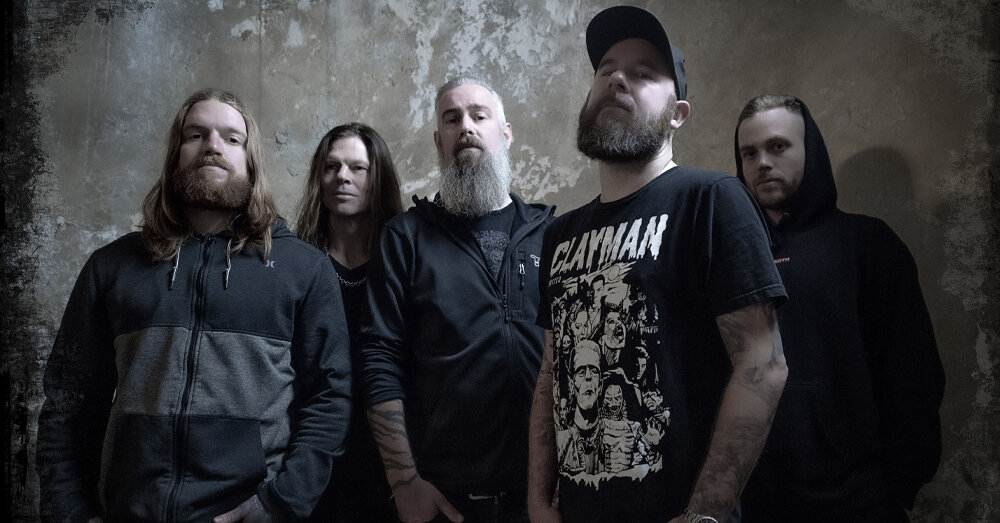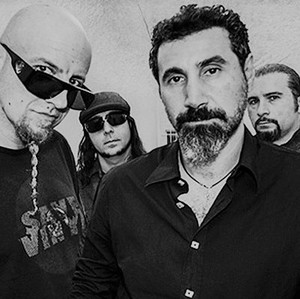
Formed in Kitee, Finland, Nightwish carved a niche that transcends genres. Their music isn’t just about lyrics and melodies; it’s an experience. Picture soaring vocals that carry you through tales of fantasy and reality, backed by orchestral scores that swell and recede like ocean tides. It’s a sonic adventure where every note is a brushstroke on a masterpiece.
One of Nightwish’s defining features is their ability to blend diverse influences seamlessly. From operatic vocals that pierce the soul to thundering drums that resonate in your chest, each element plays a crucial role. They’ve redefined what metal can be, infusing it with storytelling prowess and melodic intricacy that few can match.
What sets Nightwish apart is their relentless innovation. Albums like “Oceanborn” and “Once” have become landmarks in the genre, pushing boundaries and inspiring countless bands. They’ve proven that music isn’t just a sound but a language that transcends barriers of culture and geography.
Nightwish isn’t just a band you listen to; it’s a universe you immerse yourself in. Whether you’re a metal aficionado or a classical music lover, their music resonates on a primal level. It’s about the journey they take you on – from the darkest depths of emotion to the triumphant peaks of hope.
Symphonic Metal Legends Nightwish: A Journey Through Time and Sound
In the realm of heavy metal music, Nightwish stands as a beacon of innovation and artistry. Formed in Finland in the late 1990s, the band has carved out a unique niche with their symphonic metal sound, blending powerful guitar riffs with orchestral arrangements and operatic vocals. Their music transcends genres, weaving together elements of classical music, folk melodies, and progressive rock to create a symphony of sound that is both epic and enchanting.
At the heart of Nightwish’s appeal lies their ability to transport listeners to other worlds through their music. Each album is a sonic journey, filled with tales of mythical creatures, ancient legends, and existential ponderings. From the haunting melodies of “Nemo” to the thunderous energy of “Ghost Love Score,” every song is a testament to the band’s mastery of both musical composition and storytelling.
One of Nightwish’s defining features is their lineup of exceptionally talented musicians. Vocalist Floor Jansen commands the stage with her powerhouse vocals, effortlessly transitioning from delicate soprano to fierce metal growls. Guitarist and songwriter Tuomas Holopainen brings a cinematic quality to the band’s music, crafting lush soundscapes that ebb and flow like a tide of emotions.
As they continue to evolve and experiment with new sounds, Nightwish remains a guiding light in the world of symphonic metal. With each album, they invite listeners on a journey through time and sound, where the boundaries between reality and fantasy blur, and music becomes a transcendent force that unites us all in awe and wonder.
Behind the Curtains: Nightwish’s Evolution from Tarja to Floor
Nightwish, the Finnish symphonic metal band, has undergone a remarkable evolution from the operatic heights of Tarja Turunen to the powerful vocals of Floor Jansen. This transition not only reshaped their sound but also revitalized their presence in the global metal scene.
Tarja Turunen, with her classical training and ethereal voice, defined Nightwish’s early years. Her operatic soprano added a unique, almost mystical quality to their music, blending symphonic elements with metal in a way that captivated audiences worldwide. Songs like “Nemo” and “Phantom of the Opera” showcased her vocal prowess and established Nightwish as pioneers of symphonic metal.
However, the band faced internal conflicts, leading to Tarja’s departure in 2005. This marked a turning point as they embarked on a search for a new vocalist who could fill her monumental shoes. After several changes, Floor Jansen emerged as the ultimate choice in 2012, bringing a fresh dynamic to Nightwish’s sound.
Floor’s background in both classical and rock genres brought versatility and power to the band. Her ability to seamlessly transition between operatic highs and powerful rock vocals reinvigorated Nightwish. Songs like “Ghost Love Score” and “Élan” exemplify her range and the band’s evolved musical direction under her leadership.
The evolution from Tarja to Floor represents more than just a change in lead singers; it signifies a shift in Nightwish’s artistic vision. They’ve embraced a broader musical palette while staying true to their symphonic roots. This evolution has resonated deeply with fans old and new, ensuring Nightwish’s place at the forefront of symphonic metal.
As Nightwish continues to evolve, one thing remains certain: their ability to blend orchestral grandeur with metal intensity creates an experience that transcends genres and captivates audiences worldwide.
Nightwish’s Tuomas Holopainen: Mastermind Behind the Metal Symphony
Born with a passion for both classical music and heavy metal, Holopainen’s journey began in the small town of Kitee, Finland. From an early age, he immersed himself in the rich tapestry of classical composers like Mozart and Beethoven while also finding inspiration in the electrifying energy of bands like Metallica and Iron Maiden.
What sets Holopainen apart as a composer is his ability to seamlessly blend these seemingly disparate influences into a cohesive and spellbinding musical experience. Each Nightwish album stands as a testament to his creative vision, where lush symphonic arrangements intertwine with thunderous guitar solos and soaring vocals.
Beyond his technical prowess, Holopainen’s compositions are imbued with deep emotion and narrative complexity. Themes of love, loss, mythology, and the human experience resonate throughout Nightwish’s discography, captivating listeners and transporting them to otherworldly realms.
Holopainen’s role extends beyond that of a mere composer; he is also the primary songwriter and keyboardist for Nightwish. His compositions often serve as the foundation upon which the band’s sound is built, guiding listeners through epic musical landscapes that unfold like vivid stories.
In essence, Tuomas Holopainen stands as a visionary in the world of metal music, where his ability to evoke profound emotions and create immersive sonic experiences has earned him a devoted global following. With each new album and live performance, he continues to push the boundaries of what symphonic metal can achieve, solidifying his legacy as the mastermind behind the metal symphony.
Annette vs. Floor: Vocal Dynamics in Nightwish’s Legacy
Annette Olzon brought a fresh, melodic edge to Nightwish when she joined in 2007. Her voice, characterized by its clarity and emotive depth, resonated with fans on albums like “Dark Passion Play” and “Imaginaerum.” Songs such as “Amaranth” and “Storytime” showcased her ability to blend operatic tones with a contemporary rock feel, creating a compelling contrast that defined Nightwish’s sound during her tenure.
Floor Jansen, known for her commanding presence and versatility, stepped into the spotlight in 2013. With a background in both classical and metal music, Floor brought a robust vocal range that enriched Nightwish’s compositions further. Her debut in “Endless Forms Most Beautiful” marked a turning point, as she seamlessly integrated operatic flourishes with raw power on tracks like “Élan” and the epic “The Greatest Show on Earth.”
Comparing Annette and Floor’s vocal styles reveals intriguing contrasts. Annette’s approach leans towards a delicate balance of lyricism and intensity, whereas Floor’s vocals often push the boundaries of operatic grandeur, embracing a more theatrical flair. This distinction is evident in their performances of Nightwish classics, where each vocalist brings her unique interpretation to beloved tracks, captivating audiences with every note.
The evolution from Annette to Floor underscores Nightwish’s ability to adapt and thrive with changing vocal dynamics. Their legacy continues to inspire fans worldwide, highlighting the enduring impact of powerful, emotive vocals in the realm of symphonic metal.
The Nightwish Effect: How Symphonic Metal Redefined the Genre
Formed in Finland in the late 1990s, Nightwish introduced audiences to a new kind of metal experience. Their music blends thunderous guitar riffs and pounding drums with symphonic arrangements featuring choirs, orchestras, and keyboards. This synthesis of metal and classical music traditions gives their compositions a sweeping, cinematic quality that transports listeners to otherworldly realms.
Central to Nightwish’s appeal is their ability to weave intricate narratives and thematic elements into their music. Often drawing inspiration from mythology, fantasy literature, and personal introspection, their lyrics explore profound themes of love, loss, and the human condition. This storytelling aspect resonates deeply with fans, adding layers of emotional depth to their already powerful musical compositions.
The band’s lineup changes over the years have also shaped their evolution, with each era bringing new dynamics and influences to their sound. Vocalists like Tarja Turunen, Anette Olzon, and Floor Jansen have each left their mark, contributing unique vocal styles that range from operatic to contemporary rock.
Nightwish’s impact extends beyond their music alone. They have inspired a new generation of musicians to explore the possibilities of combining metal with classical and symphonic elements. This influence can be seen in the rise of other symphonic metal bands around the world, each bringing their own cultural and musical backgrounds to enrich the genre further.
From Finland to the World: Nightwish’s Global Impact on Metal
Nightwish’s journey began in the late 1990s when Tuomas Holopainen, the band’s visionary composer, formed the group in Kitee, Finland. With a blend of operatic vocals, heavy guitar riffs, and orchestral elements, Nightwish carved a niche in the metal genre that transcended traditional boundaries. Their music tells stories of myth, fantasy, and human emotion, drawing listeners into a world where imagination knows no limits.
Over the years, Nightwish has evolved, welcoming talented vocalists like Tarja Turunen, Anette Olzon, and Floor Jansen, each contributing a unique voice that adds depth to their narratives. Songs like “Nemo,” “Ghost Love Score,” and “The Poet and the Pendulum” have become anthems for fans worldwide, showcasing the band’s ability to blend symphonic grandeur with raw emotional power.
Beyond their musical prowess, Nightwish’s impact extends to cultural realms. They’ve sold out arenas from Helsinki to Tokyo, captivating audiences with elaborate stage productions that complement their theatrical music. The band’s commitment to storytelling through music has earned them a devoted fanbase known as the Nightwish Army, whose passion fuels the band’s global tours and album releases.
In the realm of metal music, Nightwish stands as a beacon of innovation and artistic integrity. They continue to push boundaries, inspiring new generations of musicians and listeners alike. Whether performing at festivals like Wacken Open Air or headlining their own tours, Nightwish remains a testament to the power of music to transcend borders and connect people worldwide.
Frequently Asked Questions
Who are the current members of Nightwish?
Find out who the current members of Nightwish are with our concise list. Stay updated on the band’s lineup.
Where can I buy Nightwish merchandise?
Discover where to purchase Nightwish merchandise with ease. Our FAQ provides a concise guide on reliable sources for buying official band apparel and accessories, ensuring you find authentic products conveniently.
What are Nightwish’s most popular songs?
Discover Nightwish’s most popular songs with our concise list highlighting their greatest hits, ensuring you enjoy their best-known tracks effortlessly.
What is Nightwish’s music genre?
Discover the music genre of Nightwish, a Finnish band known for blending symphonic elements with metal. Their unique style combines orchestral arrangements, powerful vocals, and heavy guitar riffs, creating a distinctive sound that spans genres like symphonic metal, power metal, and gothic metal.
How did Nightwish get their name?
Nightwish got their name from Tuomas Holopainen’s concept of a dream world where the night is more powerful than the day, symbolizing imagination and fantasy. This name reflects the band’s ethereal and symphonic style of music.









One thought on “Nightwish”